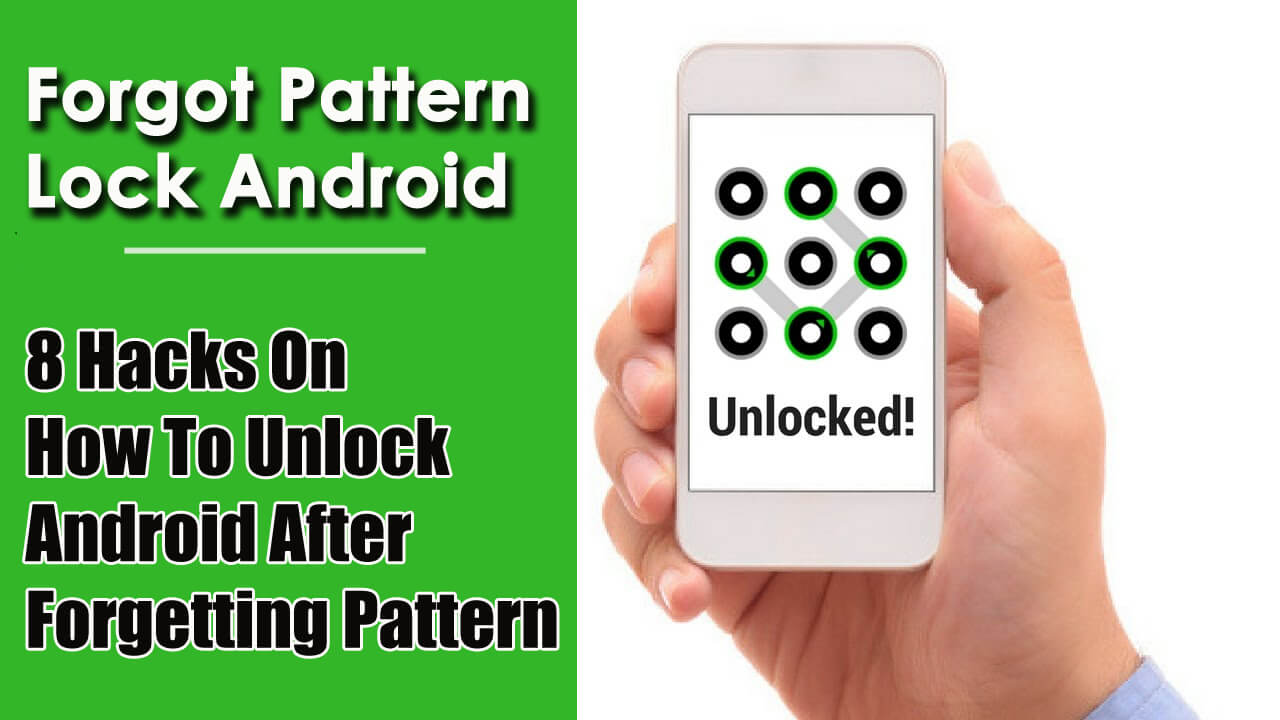

#Unlock pattern android windows
Windows 8's lock screen with Ctrl+ Alt+ Delete requirement enabled In November 2017, Google Play Store officially banned non-lock screen apps from monetizing the lock screen. Some apps may contain adware, which hijacks the default lock screen to replace it with one that displays advertising. On Samsung devices, the lock screen involves dragging in any direction from any location on the screen ( TouchWiz Nature devices, such as the Galaxy S III and S4, are also accompanied by a visual effect, such as a pond ripple or lens flare) similarly to HTC's lock screen, app shortcuts can be dragged up from the bottom of the screen to unlock directly into them.
#Unlock pattern android android
Īndroid distributions by other manufacturers typically use different lock screen designs than what stock Android utilizes some versions of HTC's Sense used a metallic ring dragged from the bottom of the screen to unlock the phone, and also allows users to launch apps by dragging their respective shortcut icon into the ring instead. Android also allows devices to be locked using either a password, passcode, a pattern on a grid of 9 circles, fingerprint sensing, or facial recognition. The camera is accessed in a similar manner by swiping from the right edge of the screen. Android 4.2 makes additional changes to the lock screen, allowing users to add widgets to pages accessible on the lock screen by swiping from the left edge of the screen. On 4.0, the option to unlock straight to the camera is provided, while 4.1 adds the ability to unlock into a Google Search screen by dragging up. Android 3.0 introduced a new design: a ball with a padlock icon is dragged to the outside of a circular area. On Android 2.1, the rotary dial was replaced by two tabs on either end of the screen. On Android 2.0, a new gesture-based lock screen was introduced, displaying two icons: one for unlocking the phone, and one for setting the volume mode, activated by dragging the relevant icon to the center of the screen on a curve (similarly to a rotary dial). Īt first, Android did not use a gesture-based lock screen, electing to require the user to press the phone's Menu button.
#Unlock pattern android pro
As the iPhone X and iPad Pro do not have physical home buttons, the user must swipe upwards from the bottom of the screen instead. Swiping is still used to access the camera, as well as an additional page to the left with widgets. iOS 10 made major changes to the lock screen, replacing the sliding gesture with pressing the Home button.

The lock screen also displays a clock, notifications, and provides audio playback controls. On iOS 7, the slider widget was removed as part of a larger overhaul of the iOS interface, and users could now swipe from any point on the screen. Beginning on iOS 5, sliding in the other direction sends the user directly to the camera app. Apple's iOS, used by the iPhone and iPad lines, utilized a similar unlock mechanism until iOS 10, with an on-screen slider slid to the right. Phones manufactured by Neonode were unlocked by swiping to the right on its touchscreen. Mobile operating system that run on smartphones and tablets typically use a gesture based lock-screen. Īndroid 12's lock screen the device is unlocked from an upward swipe gesture or by using the fingerprint scanner, if a fingerprint is registered. ĭepending on the operating system and device type, a lock screen can range from a simple login screen, to an overview screen with the current date and time, weather, recent notifications, playback controls for media being played in the background (typically music), shortcuts to applications (such as the camera), and optionally, the contact information of the device's owner (which can be used in the event that the device is lost or stolen, or during a medical emergency). There are various authentication methods to get past the lock screen, with the most popular and common ones being personal identification numbers (PINs), the Android pattern lock, and biometrics (e.g. They regulate immediate access to a device by requiring the user to perform a certain action in order to receive access, such as entering a password, using a certain button combination, or performing a certain gesture using a device's touchscreen. A lock screen is a computer user interface element used by various operating systems.


 0 kommentar(er)
0 kommentar(er)
